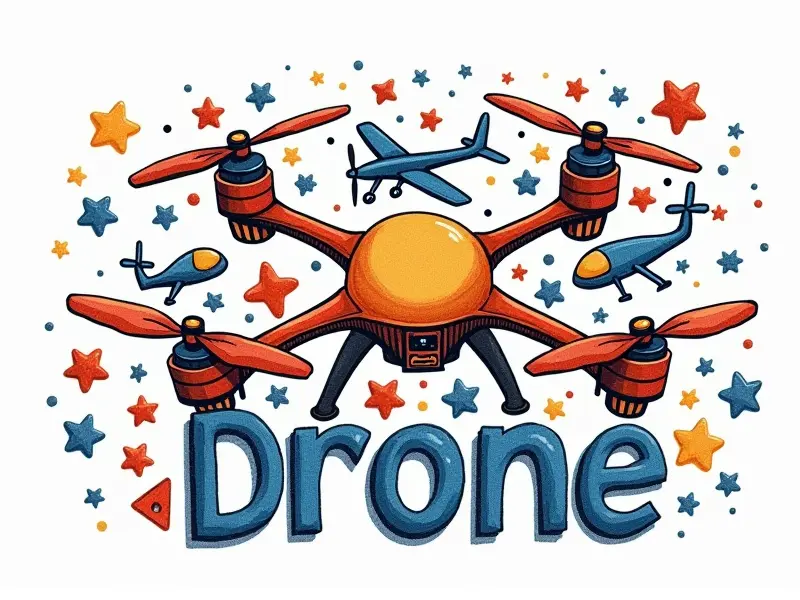Drone FPV range limits?

Maximize Your Drone FPV Range Today
Welcome to the world of first-person view (FPV) drones! Whether you're a beginner or an experienced pilot, understanding and maximizing your drone's FPV range is crucial for optimal performance. In this article, we'll explore various techniques and solutions that can help you extend your FPV distance and enhance your flying experience.
Understanding FPV Range in Drones
The FPV range of a drone refers to the maximum distance at which the video feed from the drone's camera remains clear and stable. This range is influenced by several factors, including signal strength, antenna quality, and environmental conditions. A strong FPV signal ensures that you can control your drone effectively and enjoy uninterrupted live footage.
Boosting FPV Signal Strength Easily
Improving the signal strength of your FPV system doesn't always require expensive upgrades. Simple adjustments like optimizing antenna placement, using high-quality cables, and ensuring a clean power supply can significantly enhance your drone's range. Additionally, reducing interference from other electronic devices in the vicinity can also boost your signal.
Factors Affecting FPV Drone Range
- Antenna Quality: High-quality antennas are essential for maintaining a strong and stable connection.
- Environmental Interference: Obstacles like buildings, trees, and other electronic devices can weaken the signal.
- Power Supply: A clean power source ensures that your FPV equipment operates at its best without interference from noise.
Common Issues with FPV Range
Several common issues can limit your drone's FPV range. These include signal degradation due to distance, poor antenna alignment, and interference from other wireless devices. Understanding these challenges is the first step towards finding effective solutions.
DIY Solutions for Better FPV Range
If you're looking to enhance your FPV range without breaking the bank, there are several DIY methods you can try:
- Antenna Modification: Experiment with different antenna configurations and placements.
- Cable Quality: Use high-quality coaxial cables to reduce signal loss.
- Signal Boosters: Implement signal boosters or repeaters to extend the range of your FPV system.
Optimal Antennas for Max FPV Range
Selecting the right antennas is crucial for maximizing your drone's FPV range. Directional antennas offer better focus and stability over long distances, while omnidirectional antennas provide a wider coverage area but with less signal strength.
- Yagi Antennas: Ideal for directional signals and extended ranges.
- Omnidirectional Antennas: Suitable for all-around coverage in open areas.
Tips to Extend FPV Drone Distance
Here are some practical tips to help you extend the range of your FPV drone:
- Use High-Gain Antennas: Opt for antennas with higher gain ratings.
- Avoid Obstacles: Keep a clear line-of-sight between the drone and ground station.
- Upgrade Your Receiver: Consider using more advanced receivers that offer better sensitivity.
Understanding Your FPV Drone's Limits
Every drone has its limits when it comes to FPV range. Understanding these limitations is crucial for safe and effective flying. Factors such as battery life, flight time, and signal degradation all play a role in determining the maximum distance your drone can fly.
Increasing FPV Range Without Upgrades
While upgrading components can significantly enhance your FPV range, there are also ways to improve performance without making major changes:
- Optimize Antenna Placement: Ensure that antennas are properly aligned and positioned.
- Reduce Interference: Move away from sources of interference like Wi-Fi networks or other drones.
Techniques to Extend FPV Distance
To further extend your FPV distance, consider implementing the following techniques:
- Use Repeaters: Install repeaters at strategic points to relay signals over longer distances.
- High-Altitude Flying: Fly from higher altitudes to reduce signal obstruction and interference.
Conclusion
In conclusion, maximizing your drone's FPV range is a combination of understanding the technical aspects and implementing practical solutions. By optimizing antenna placement, reducing interference, and using high-quality components, you can significantly enhance your flying experience. Remember to always fly within safe limits and adhere to local regulations.

